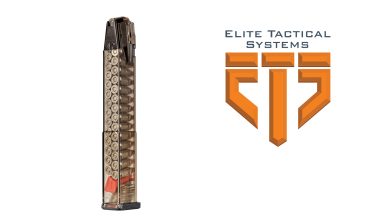How the military plans to reduce blast-related injuries in troops
:quality(70)/cloudfront-us-east-1.images.arcpublishing.com/archetype/IALPFS4TFRGEFKMZWVUGY44CGU.jpg?w=780&resize=780,470&ssl=1)
Defense Department leaders on Friday unveiled a series of new steps designed to protect troops from blast overpressure injuries related to weapons use, including new restrictions on how close trainers can stand during firing range sessions and cognitive assessments for all troops by the end of next year.
A blast overpressure injury can occur in several jobs across the military branches when explosions create high pressure that can cause a myriad of injuries to service members.
The Pentagon’s new policies follow concerns about the potential for troops to develop traumatic brain injury and similar health issues from routine training that exposes them to blast overpressure, despite past Pentagon assurances that such risks were minimal.
But a series of reports in The New York Times over the last year found significant examples of such issues among military personnel manning mortars and other heavy weaponry, with symptoms that included headaches, insomnia, memory loss and depression.
RELATED
In a statement, Deputy Defense Secretary Kathleen Hicks acknowledged that blast overpressure from weapons firing “is one of many factors that can negatively affect warfighter brain health” and said the changes are needed to ensure that military members are both properly trained and protected.
“We owe it to our servicemembers, civilian personnel, and their families who defend our nation and entrust us with their care to ensure we are using every available resource to advance research to better understand the effects of blast exposure and to provide the best care possible,” she said.
Blast injuries are caused by waves of air pressure pushed out by weapons. The larger the wave, the more it can shake or compress organs in the body. Repetitive pressure strikes to the brain can cause increasing damage, leading to a host of health problems.
A Defense Department memo released last week calls for all new recruits to be screened for signs of brain injury by the end of the year, and all currently serving reservists and active-duty personnel to be screened by the end of fiscal 2025.
It also lists 97 military occupational specialties “at increased risk of blast overpressure exposure” due to the nature of their missions. They include 15 Army specialties, 11 Air Force jobs, 30 Marine Corps posts and 41 Navy assignments.
And the memo singles out several weapons systems known to produce blast overpressure levels exceeding four pounds per square inch: breaching charges, howitzers, mortars, M 107 and MK 15 sniper rifles, M2A I and GAU 21 machine guns, Ml36 and M72 light anti-tank weapons, and the M3 multi-role anti-armor system.
The full memo is available at the Defense Department website.
Stand off distances for personnel involved in training with the weapons have all been updated. For example, trainers working with personnel using the MK 15 sniper rifle will have to stand seven feet away to minimize their blast exposure. Those instructing on the shoulder-mounted M3 will have to remain 16 feet away.
Service leaders are also being instructed to integrate more simulators into their training strategies to reduce blast exposure, as well as “not expend excess rounds once training standards are achieved.”
And department leaders promised to establish new procedures “to ensure personnel recognize blast overpressure symptoms, report exposures to their command, and seek an evaluation from their medical provider if experiencing symptoms.”
Leo covers Congress, Veterans Affairs and the White House for Military Times. He has covered Washington, D.C. since 2004, focusing on military personnel and veterans policies. His work has earned numerous honors, including a 2009 Polk award, a 2010 National Headliner Award, the IAVA Leadership in Journalism award and the VFW News Media award.
Read the full article here







